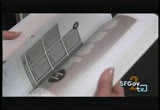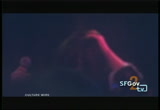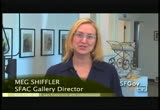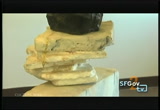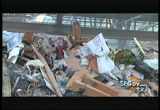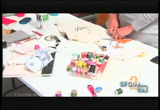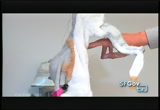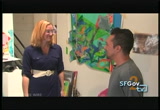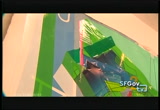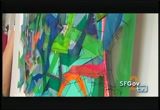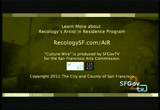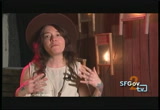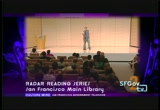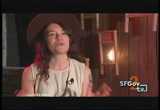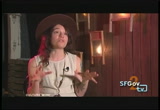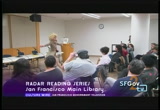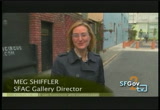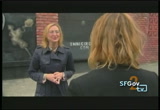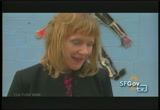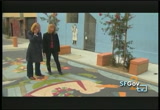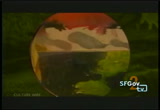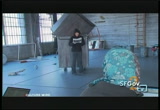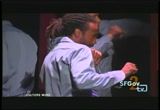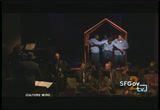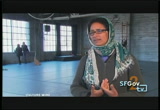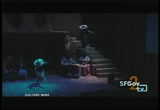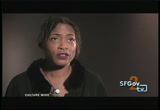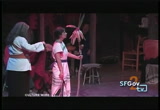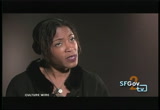tv [untitled] February 11, 2013 2:30pm-3:00pm PST
2:30 pm
>> what is the inspiration behind these posters? >> no, disease of the related to the bay and, of course. music -- it is related to the band, of course the musical content or isn't related to the bed. album covers can come from anywhere. ♪ ♪ >> class actress was great. we have been having so much fun. i did not realize how beautiful the cal academy looks than that. what other events take place
2:31 pm
here? >> we do corporate events that night on a regular basis. but nightlife is your best bet to come in as a regular person pharmacy the academy at night, and visit with friends. calacademy.org/nightlife. we have details for the next few weeks. you can get tickets online in advance or at the door. >> thank you so much. thank you for watching culturewire on sf gov tv. >> welcome to "culturewire." today we are at recology. they are celebrate 20 years of one of the most incredibly
2:32 pm
unique artist residency programs. we are here to learn more from one of the resident artists. welcome to the show, deborah. tell us how this program began 20 years ago. >> the program began 20 years ago. our founder was an environmentalist and an activist and an artist in the 1970's. she started these street sweeping campaigns in the city. she started with kids. they had an exhibition at city hall. city officials heard about her efforts and they invited her to this facility. we thought it would coincide with our efforts to get folks to recycle, it is a great educational tool. since then, we have had 95 professional artists come through. >> how has the program changed over the years? how has the program -- what can the public has an artist engage
2:33 pm
with? >> for the most part, we worked with metal and wood, what you would expect from a program like ours. over the years, we tried to include artists and all types of mediums. conceptual artists, at installation, photographers, videographers. >> that has really expanded the program out. it is becoming so dynamic right now with your vision of interesting artists in gauging here. why would an artist when to come here? >> mainly, access to the materials. we also give them a lot of support. when they start, it is an empty studio. they go out to the public area and -- we call it the big store. they go out shopping, take the materials that, and get to work. it is kind of like a reprieve, so they can really focus on their body of work. >> when you are talking about
2:34 pm
recology, do you have the only sculpture garden at the top? >> it is based on work that was done many years ago in new york. it is the only kind of structured, artist program. weit is beautiful. a lot of the plants you see were pulled out of the garbage, and we use our compost to transplant them. the pathway is lined with rubble from the earthquake from the freeways we tour about 5000 people a year to our facility, adults and children. we talk about recycling and conservation. they can meet the artists. >> fantastic. let's go meet some of your current artists. here we are with lauren. can you tell us how long have
2:35 pm
been here so far and what you're working on? >> we started our residency on june 1, so we came into the studio then and spent most of the first couple weeks just digging around in the trash. i am continuing my body of work, kind of making these hand- embroidered objects from our day-to-day life. >> can you describe some of the things you have been making here? this is amazing. >> i think i started a lot of my work about the qualities of light is in the weight. i have been thinking a lot about things floating through the air. it is also very windy down here. there is a piece of sheet music up there that i have embroidered third. there is a pamphlet about hearing dea -- nearing death. this is a dead rabbit. this is what i am working on now. this is a greeting card that i
2:36 pm
found, making it embroidered. it is for a very special friend. >> while we were looking at this, i glanced down and this is amazing, and it is on top of a book, it is ridiculous and amazing. >> i am interested in the serendipity of these still life compositions. when he got to the garbage and to see the arrangement of objects that is completely spontaneous. it is probably one of the least thought of compositions. people are getting rid of this stuff. it holds no real value to them, because they're disposing of it. >> we're here in another recology studio with abel. what attracted you to apply for this special program? >> who would not want to come to the dump? but is the first question. for me, being in a situation that you're not comfortable in has always been the best.
2:37 pm
>> what materials were you immediately attracted to when you started and so what was available here? >> there are a lot of books. that is one of the thing that hits me the most. books are good for understanding, language, and art in general. also being a graphic designer, going straight to the magazines and seeing all this printed material being discarded has also been part of my work. of course, always wood or any kind of plastic form or anything like that. >> job mr. some of the pieces you have made while you have been here. -- taught me through some of the pieces you have made while you have been here. >> the first thing that attracted me to this was the printed surface. it was actually a poster. it was a silk screen watercolor, about 8 feet long. in terms of the flatwork, i work with a lot of cloddish. so being able to cut into it come at into it, removed parts, it is part of the process of
2:38 pm
negotiating the final form. >> how do you jump from the two dimensional work that you create to the three-dimensional? maybe going back from the 3f to 2d. >> everything is in the process of becoming. things are never said or settled. the sculptures are being made while i am doing the collages, and vice versa. it becomes a part of something else. there's always this figuring out of where things belong or where they could parapets something else. at the end goal is to possibly see one of these collage plans be built out and create a structure that reflects back into the flat work. >> thank you so much for allowing "culturewire" to visit this amazing facility and to learn more about the artists in residence program. is there anything you like our
2:39 pm
viewers to know? >> we have art exhibitions every four months, and a win by the public to come out. everybody is welcome to come out. we have food. sometimes we have gains and bands. it is great time. from june to september, we accept applications from bay area artists. we encouraged artists from all mediums to apply. we want as many artists from the bay area out here so they can have the same experience. >> how many artists to do your host here? >> 6 artist a year, and we receive about 108 applications. very competitive. >> but everyone should be encouraged to apply. thank you again for hosting us. >> thank you for including us in "culturewire." ♪ >> feel like it really is a community. they are not the same thing, but it really does feel like there's
2:40 pm
that kind of a five. everybody is there to enjoy a literary reading. >> the best lit in san francisco. friendly, free, and you might get fed. ♪ [applause] >> this san francisco ryther created the radar reading series in 2003. she was inspired when she first moved to this city in the early 1990's and discover the wild west atmosphere of open mi it's ic in the mission. >> although there were these open mics every night of the week, they were super macho. people writing poems about being jerks. beatty their chest onstage. >> she was energized by the scene and proved up with other
2:41 pm
girls who wanted their voices to be heard. touring the country and sharing gen-x 7 as a. her mainstream reputation grew with her novel. theses san francisco public library took notice and asked her if she would begin carrying a monthly reading series based on her community. >> a lot of the raiders that i work with our like underground writers. they're just coming at publishing and at being a writer from this underground way. coming in to the library is awesome. very good for the library to show this writing community that they are welcome. at first, people were like, you want me to read at the library, really? things like that.
2:42 pm
>> as a documentary, there are interviews -- [inaudible] >> radar readings are focused on clear culture. strayed all others might write about gay authors. gay authors might write about universal experiences. the host creates a welcoming environment for everybody. there is no cultural barrier to entry. >> the demographic of people who come will match the demographic of the reader. it is very simple. if we want more people of color, you book more people of color. you want more women, your book more women. kind of like that. it gets mixed up a little bit. in general, we kind of have a core group of people who come every month.
2:43 pm
their ages and very. we definitely have some folks who are straight. >> the loyal audience has allowed michelle to take more chances with the monthly lineup. established authors bring in an older audience. younker authors bring in their friends from the community who might be bringing in an older author. >> raider has provided a stage for more than 400 writers. it ranges from fiction to academics stories to academic stories this service the underground of queer fell, history, or culture. >> and there are so many different literary circles in san francisco. i have been programming this reading series for nine years. and i still have a huge list on my computer of people i need to
2:44 pm
carry into this. >> the supportive audience has allowed michele to try new experiment this year, the radar book club. a deep explorationer of a single work. after the talk, she bounces on stage to jump-start the q&a. less charlie rose and more carson daly. >> san francisco is consistently ranked as one of the most literate cities in the united states. multiple reading events are happening every night of the year, competing against a big names like city arts and lectures. radar was voted the winner of these san francisco contest. after two decades of working for free, michelle is able to make radar her full-time job. >> i am a right to myself, but i
2:45 pm
feel like my work in this world is eagerly to bring writers together and to produce literary events. if i was only doing my own work, i would not be happy. it is, like throwing a party or a dinner party. i can match that person with that person. it is really fun for me. it is nerve wracking during the actual readings. i hope everyone is good. i hope the audience likes them. i hope everybody shows up. but everything works out. at the end of the reading, everyone is happy. ♪ >> hello. welcome to "culturewire." we are here today with bay area artist jody chanel, and we are here to see the plaza where
2:46 pm
your piece has just been installed. >> i have been doing large-scale paintings in the galleries and museums, and the idea that in the future, i could do something that would hang out a little bit longer than the duration of the installation the kind of appeal to me. i quickly found out about the san francisco arts commission school and realized there was a pre-qualified school you had to apply to, so i applied to the. >> how long did it take you to develop this work for the plaza? >> this was a fast track project. design development was about a month. >> let's look at the beautiful mural. i have never seen a mural created on asphalt. >> the heat of the asphalt, a new layer of asphalt.
2:47 pm
then, these wire rope templates that were fabricated for the line work get laid down and literally stamped into the asphalt, and then everything was hand-painted. >> maybe you could talk about some of the symbolism, maybe starting in the middle and working out. >> [inaudible] the flower of industry. >> it is like a compass. there's an arrow pointing north. >> within the great bear consolation, there are two pointed stars here. they typically lead one to the northstar, otherwise known as polaris. so i thought it has a layer of theme. >> let's talk about some of the other elements in the peace. we are walking along, and there is a weather vane.
2:48 pm
there's a sweet little bird hanging on the side. what kind of bird is that? >> [inaudible] the smallest of the gulf species, and it lives around the bay area. >> you want to talk about the types of flour patterns that you send? >> [inaudible] around 1926 or so by the dahlia society. >> what is this bird here? >> that is the california quail. >> coming up here, we had a little blustery theme. what is this area here? >> this is supposed to be the side view, the expense of the golden gate bridge. >> there it is. >> there are really beautiful elements of architecture still around, i would say that it
2:49 pm
gives that feeling over to the work. >> what are your hopes for it? >> that in a way it just becomes part of the area. i think it is starting to have that feeling. people utilize it. they sit and, and have their lunch and play on -- they sit and, and have their lunch and play on that -- they sit and come and have their lunch and play on it. just for it to be part of the neighborhood. that is my hope. >> is such a beautiful addition to our public art in san francisco. thank you for joining us. it was nice to meet you. and thank you for telling us about your beautiful mural. thanks for watching "culturewire."
2:50 pm
>> i tried to think about this room as the dream room, where we dream and bring some of those dreams to life. i feel very blessed that i have been able to spend the last 31 years of my life doing it my way, thinking about things better interesting to me, and then pursuing them. there are a lot of different artists that come here to work, mostly doing aerial work. kindred spirits, so to speak. there is a circus company that i have been fortunate enough to work with the last couple of years. i use elements of dance and choreography and combine that with theater techniques. a lot of the work is content- based, has a strong narrative. the dancers have more of a theatrical feel.
2:51 pm
i think we are best known for our specific work. in the last 15 years, spending a lot of time focusing on issues that affect us and are related to the african-american experience, here in the united states. i had heard of marcus shelby and had been in join his work but never had the opportunity to meet him. we were brought together by the equal justice society specifically for this project. we were charged with beginning work. marquez and i spent a lot of time addressing our own position on the death penalty, our experiences with people who had been incarcerated, family members, friends of friends.
2:52 pm
pulling our information. beyond that, we did our own research. to create a picture that resonated with humanity. it is the shape of a house. in this context, it is also small and acts like a cell. i thought that was an interesting play on how these people make these adjustments, half to create home. what is home for these people? the home is their cell. people talk a lot about noise -- very noisy in prisons. that is interesting to me. looking at the communication level, the rise of frustration of being caged, wondering, where
2:53 pm
does redemption fit into the equation here? [singing] i think both of us really believe the death penalty is wrong, and is flawed for many reasons. the list is as long as my arm -- about several others. we feel this is important for both of us, personally, to participate in the debate of this issue in a way that we can help people frame it for a
2:54 pm
conversation. >> a lot a ton with the community and we say to ourselves, there is this one and this one. we all compartmentalize them, we have our own agenda. our agenda is to create great work. if you are interested in that, you are part of our community. >> hello and welcome to brava theater. >> we are trying to figure out a way to make a space where theater and presentation of live work is something that you think of the same way that you think of going to the movies. of course, it has been complex in terms of economics, as it is
2:55 pm
for everyone now. artistically, we have done over 35 projects in four seasons, from producing dance, theater, presenting music, having a full- scale education program, and having more than 50,000 visitors in the building almost every year. a lot of our emerging artists to generate their first projects here, which is great. then we continue to try to support figuring out where those works can go. we have been blessed to have that work produced in new york, going on to the edinburgh festival, the warsaw theater festival. to me, those are great things when you can watch artists who think there is nowhere else that might be interested in you being a woman of color and telling your story and then getting excited about it. that is our biggest accomplishment. having artists have become better artists.
2:56 pm
what is. sheri coming back to brava, here you have this establish, amazing writer who has won a clue -- slew of awards. now she gets to director and work. even though she is this amazing, established writer, the truth is, she is being nurtured as a director and is being given some space to direct. >> the play is described as ceremony and -- where ceremony and theater me. in the indigenous tradition, when you turn 52, it is like the completion of an important era. the importance of the ceremony is to say, you are 52. whenever you have been caring for the first 52 years, it is time to let it go. really, here, they have given me carte blanche to do this.
2:57 pm
i think it is nice for me, in the sense of coming back 25 years later and seeing personally my own evolution as an artist and thinker. the whole effort to put the chicano or indigenous woman's experience on center stage is, in itself, for euro-american theaters, a radical position. because of the state of theater, it is a hard roll to hold up in institution. it is a hard road. i am looking at where we are 25 years later in the bay area, looking at how hard it is for us to strive to keep our theater is going, etc. i like to think that i'm not struggling quite as hard, personally, but what i mean by that, the intention, the commitment. particularly, to produce works
2:58 pm
that would not be produced in other places, and also to really nurture women of color artists. i think that is something that has not shifted for me in those 25 years, and it is good to see that brava remains committed to that kind of work. ♪ >> when people talk about the reflection of the community, we can only go from what we have on our staff. we have a south asian managing director, south african artistic director, latino community out rich person. aside from the staff, the other people, artists that we work with being a reflection of us, yes, the community is changing, but brava has always tried to be ahead of that trend. when i came in, i tried to make
2:59 pm
it about the work that shows the eclectic mission district, as well as serving the mission. those are the types of things those are the types of things that i feel build one brava is >> we came to seven straight about 10 years ago. -- 7th street about 10 years ago. the environment is huge. it is stronger than willpower. surrounding yourself with artists, being in a culture where artists are driving, and where a huge amount of them is a healthy environment. >> you are
37 Views
IN COLLECTIONS
SFGTV2: San Francisco Government Television Television Archive
Television Archive  Television Archive News Search Service
Television Archive News Search Service 
Uploaded by TV Archive on

 Live Music Archive
Live Music Archive Librivox Free Audio
Librivox Free Audio Metropolitan Museum
Metropolitan Museum Cleveland Museum of Art
Cleveland Museum of Art Internet Arcade
Internet Arcade Console Living Room
Console Living Room Books to Borrow
Books to Borrow Open Library
Open Library TV News
TV News Understanding 9/11
Understanding 9/11